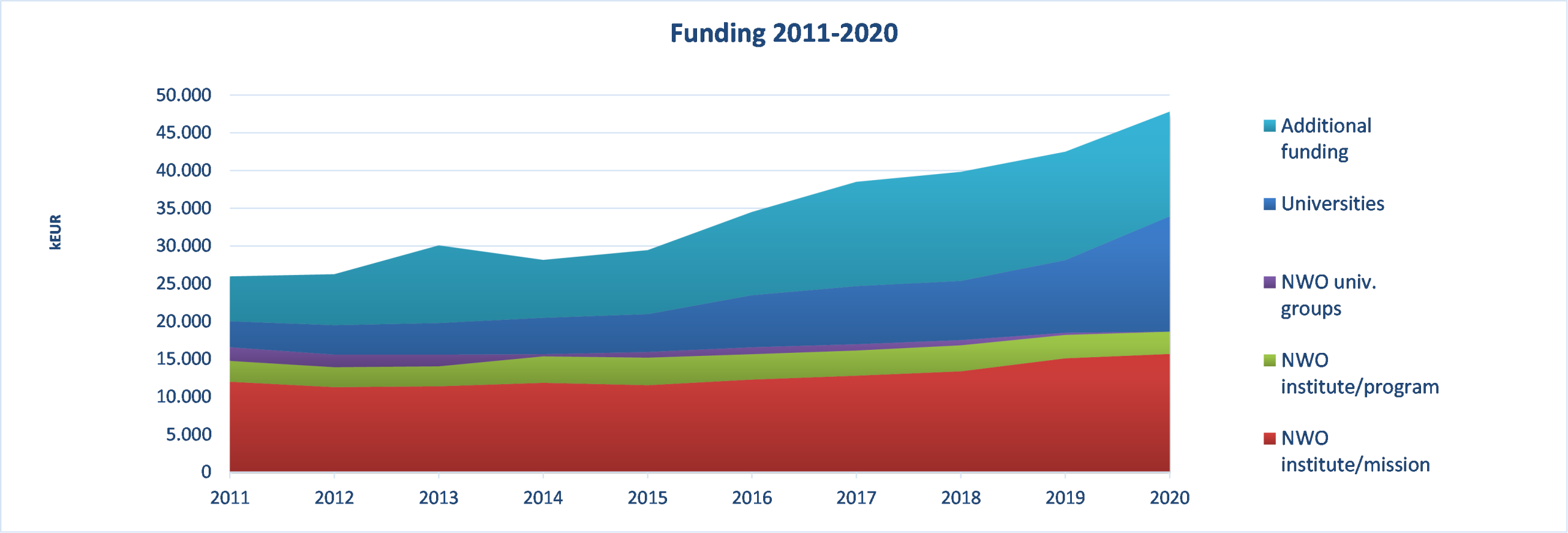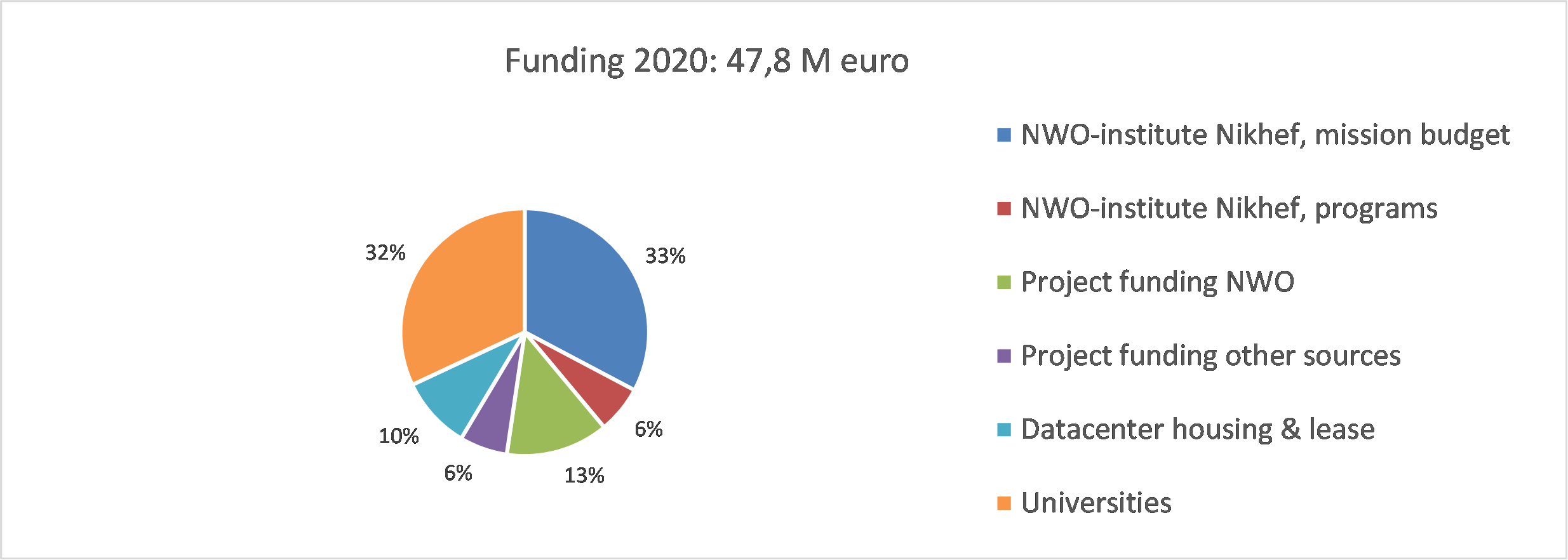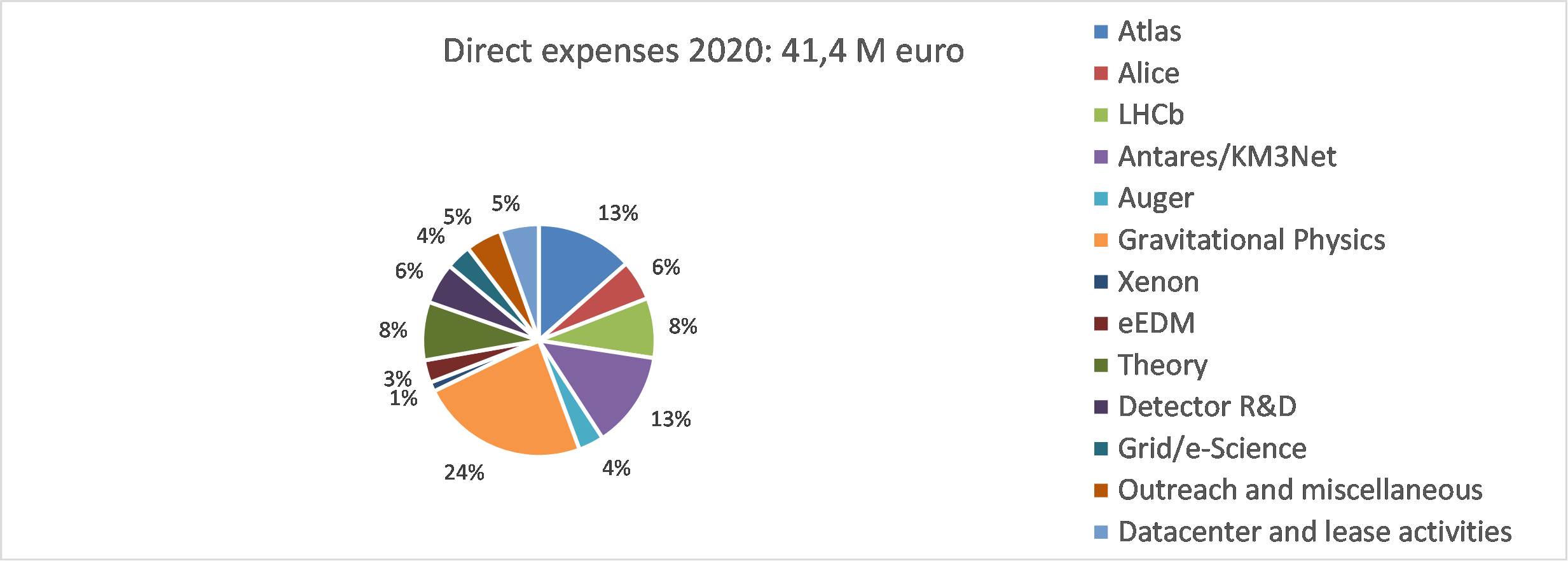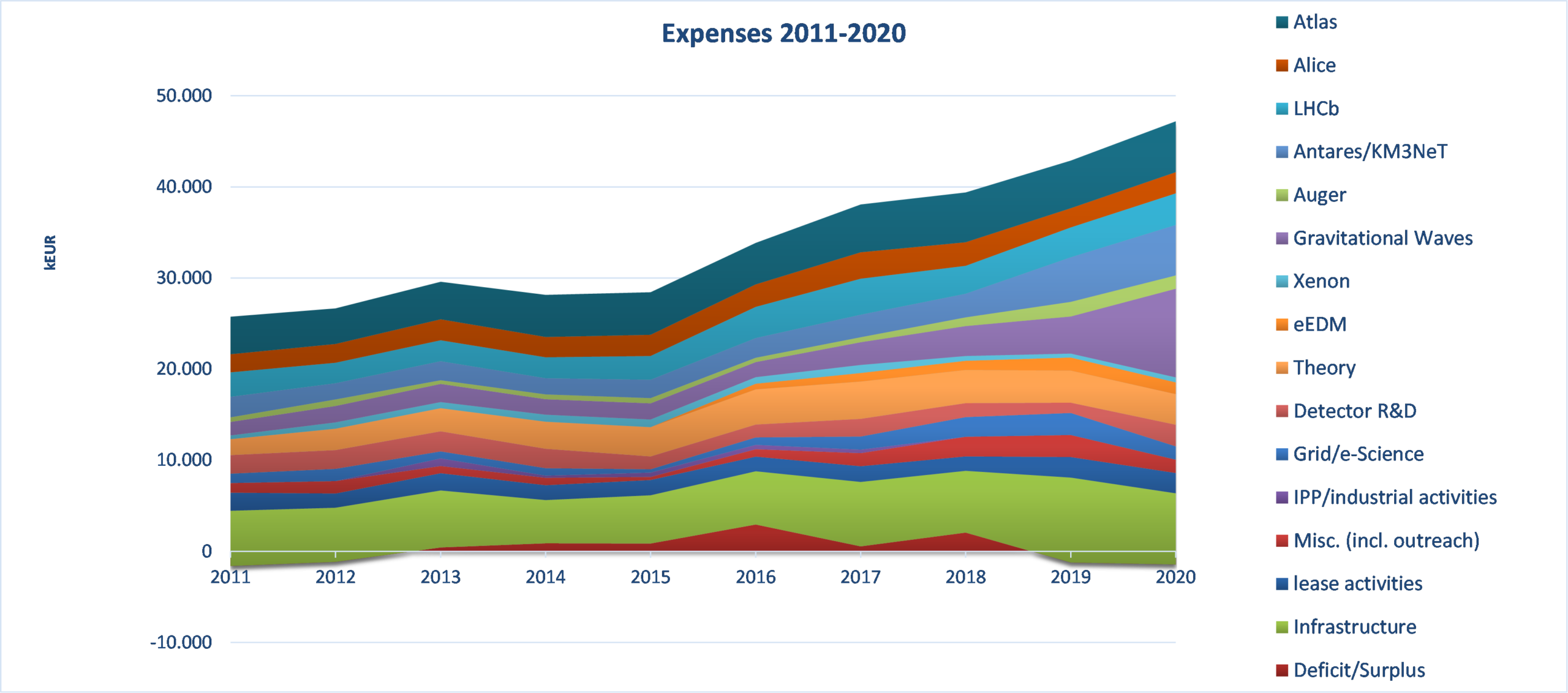As per 2017 – the first year of Nikhef’s most recent strategic plan- the financial facts and figures also include large investments, such as grants from the National Roadmap for Large Research Infrastructures. In the 2011 – 2020 graph the largest part of the increase from 2016 to 2017 is attributable to this change in reporting.
The 2020 funding level of the Nikhef partnership is higher than ever: 47,8 M€ (versus 42,5 M€ in 2019). The growth is largely due to a considerably higher share attributed to the university partners, which is now about a third of the total. In for instance 2011, this was only 13%. There are several explanations for this enormous increase: a) new university partners (Groningen and Maastricht) have joined the partnership (2020 is the first full year of the new partner University of Maastricht), b) additional staff has been appointed at the universities in the framework of the ‘Sector plans’ and c) an increasing number of projects and in particular, some large investments, such as for ETpathfinder and Virgo, are managed administratively by the university partners.

The expenses for accelerator-based particle physics (ATLAS, LHCb and ALICE) together comprise 27% of the direct expenses. Astroparticle physics activities, for which construction activities are considerable, in particular in Gravitational Waves physics (ET pathfinder and Virgo) and Neutrino physics (KM3NeT), make out 41% of direct expenses. The eEDM line (Groningen) is 3% of direct expenses.
The enabling activities (computing, detector R&D and particularly theory) consume 18% of expenses, whilst industrial activities, outreach and lease (datacenter) activities make out the remainder (10%) of the direct costs.


